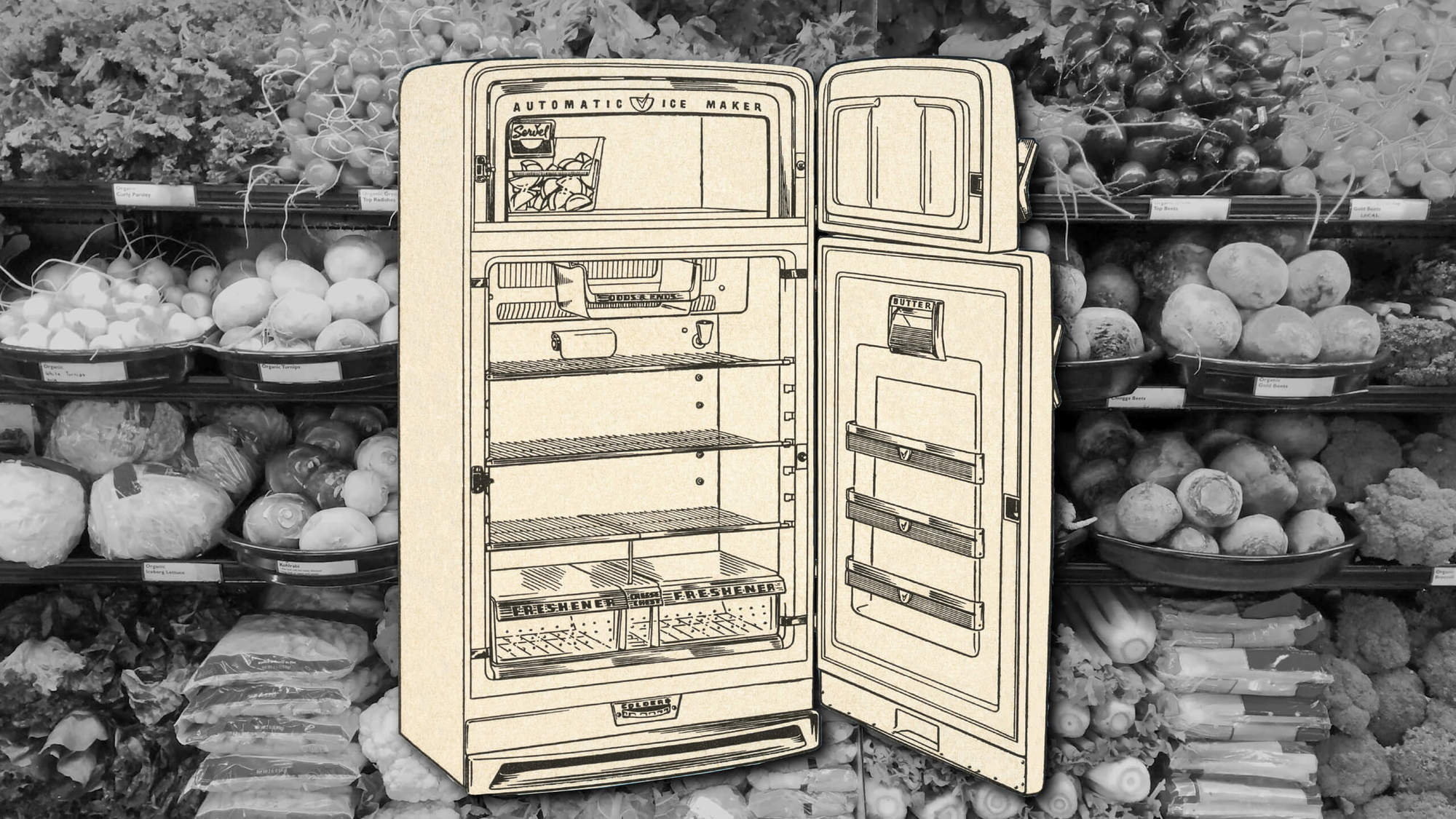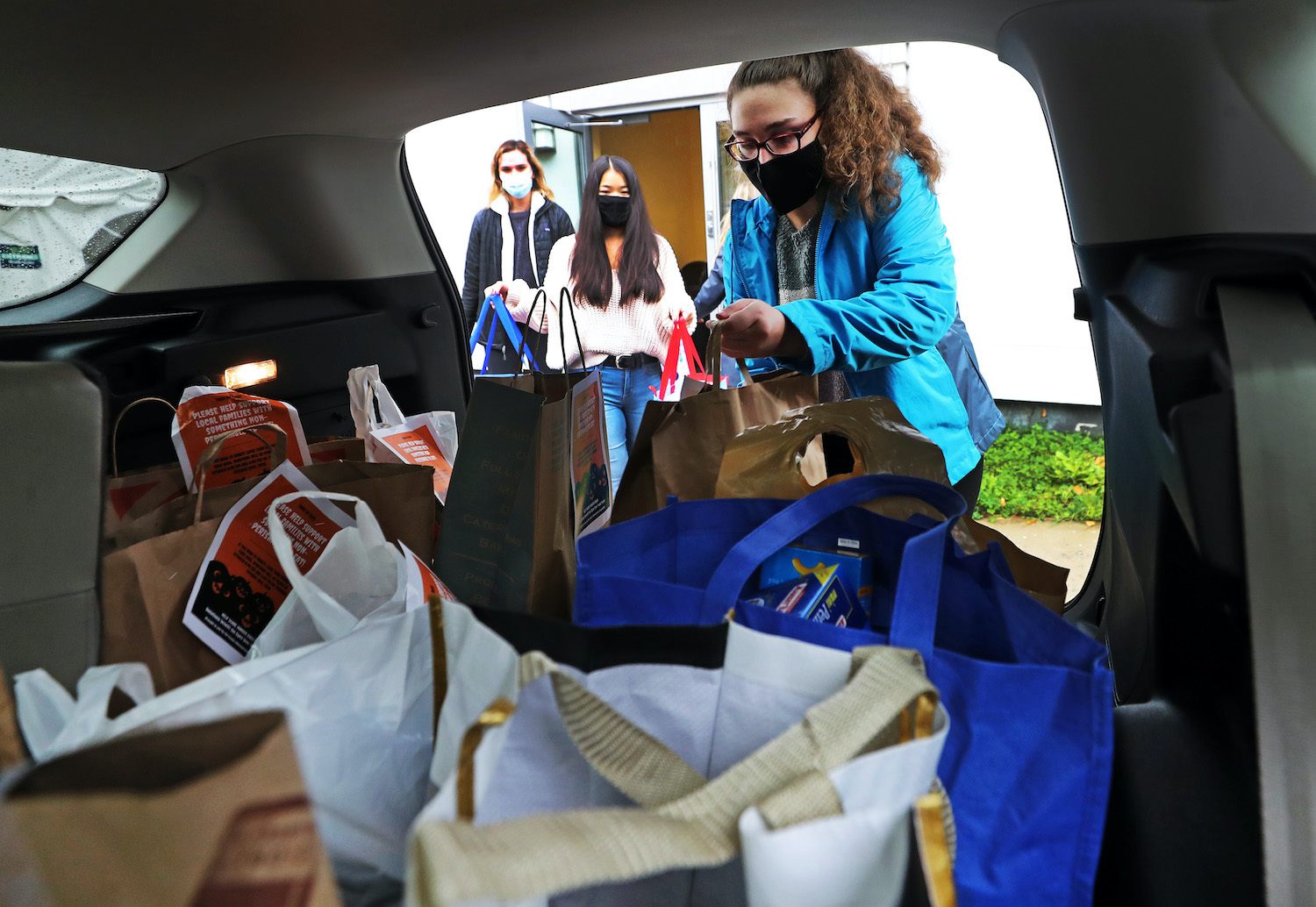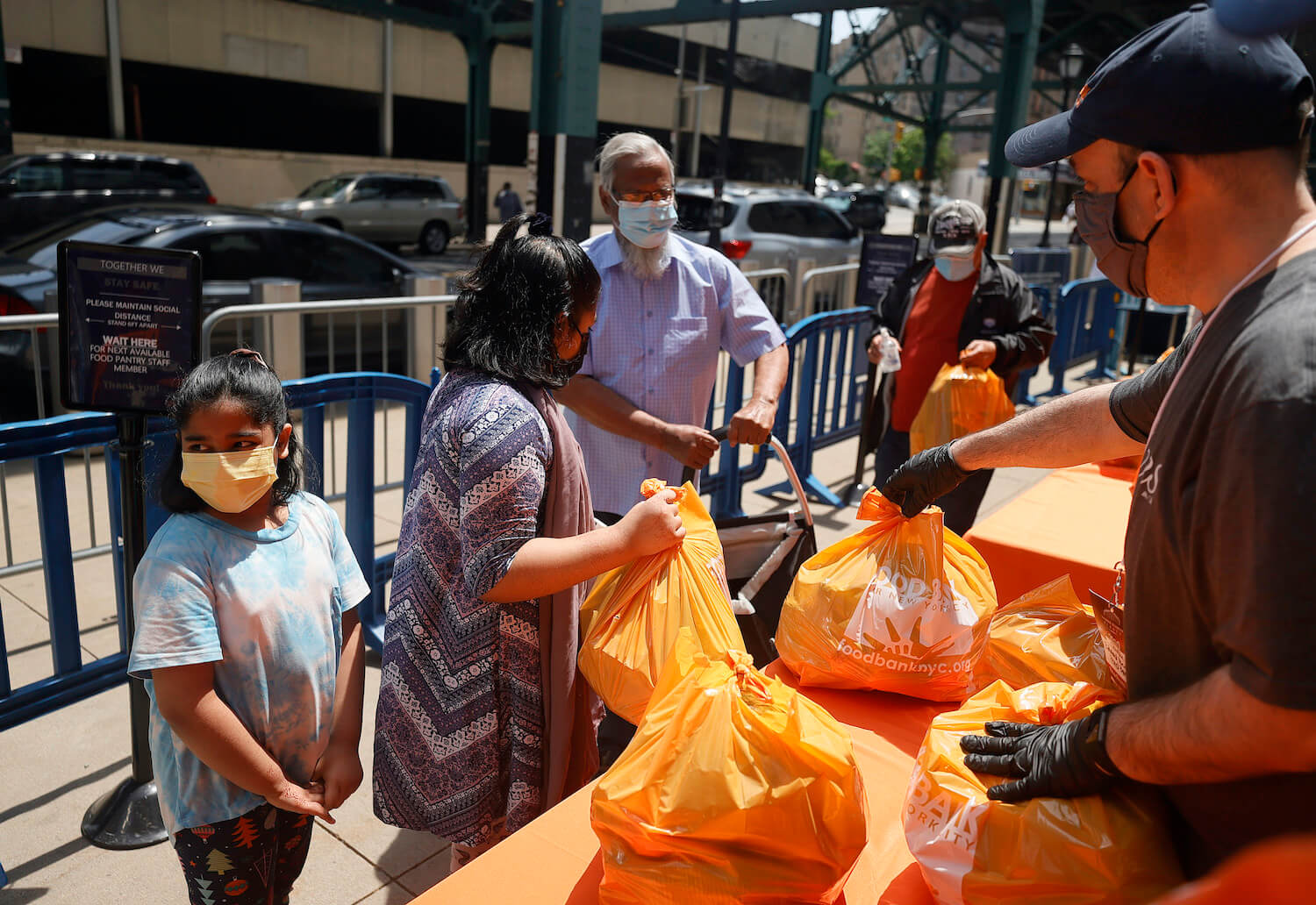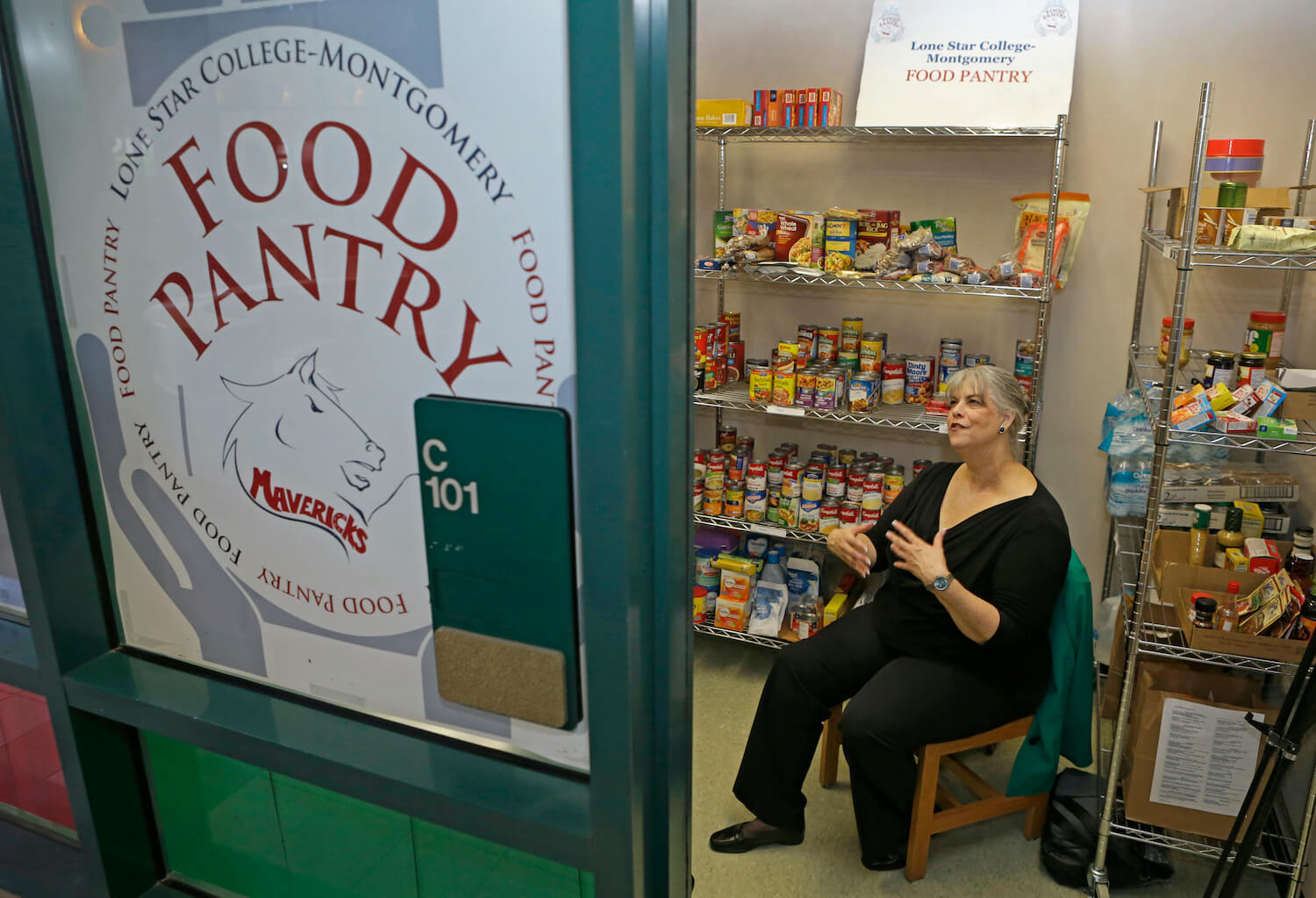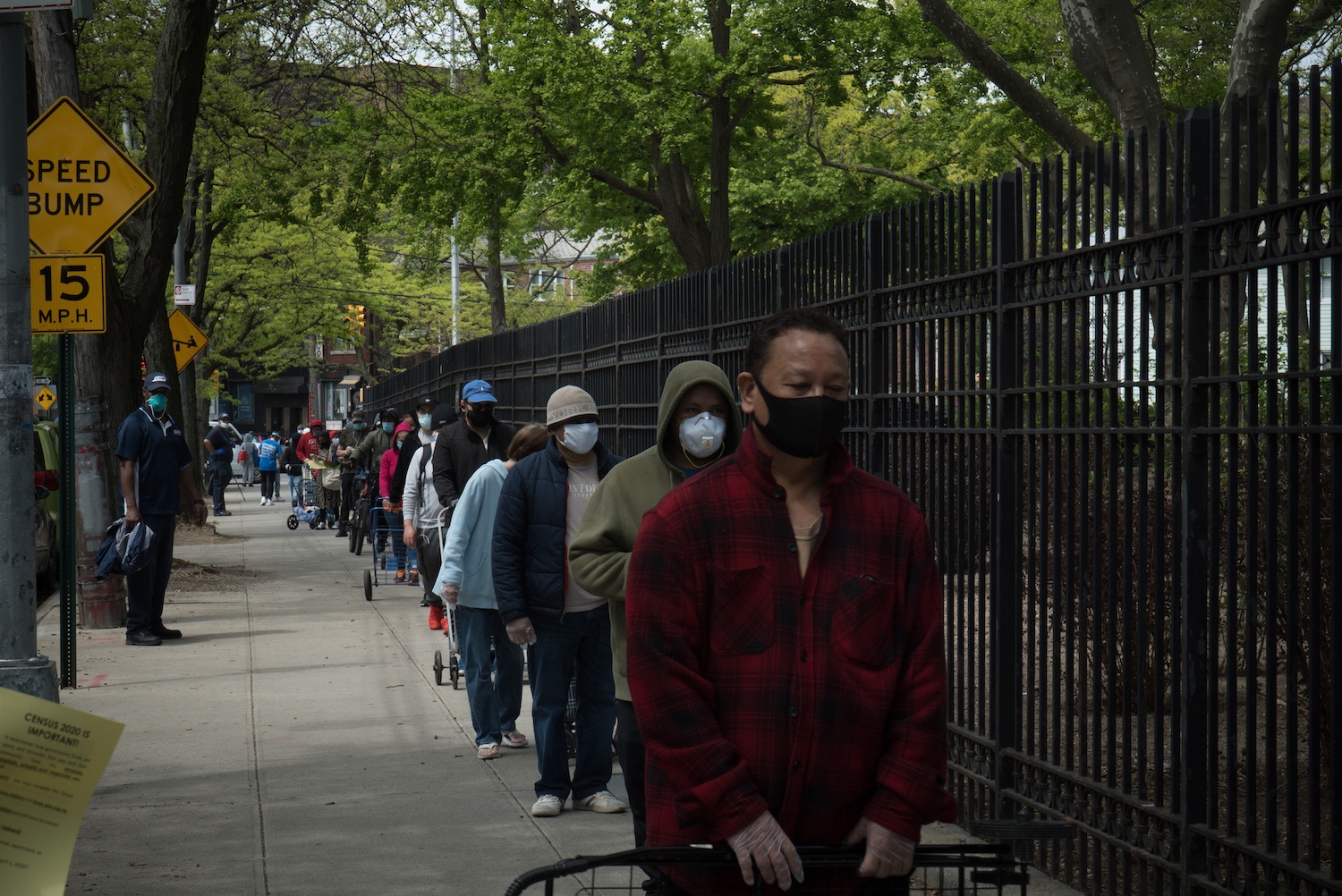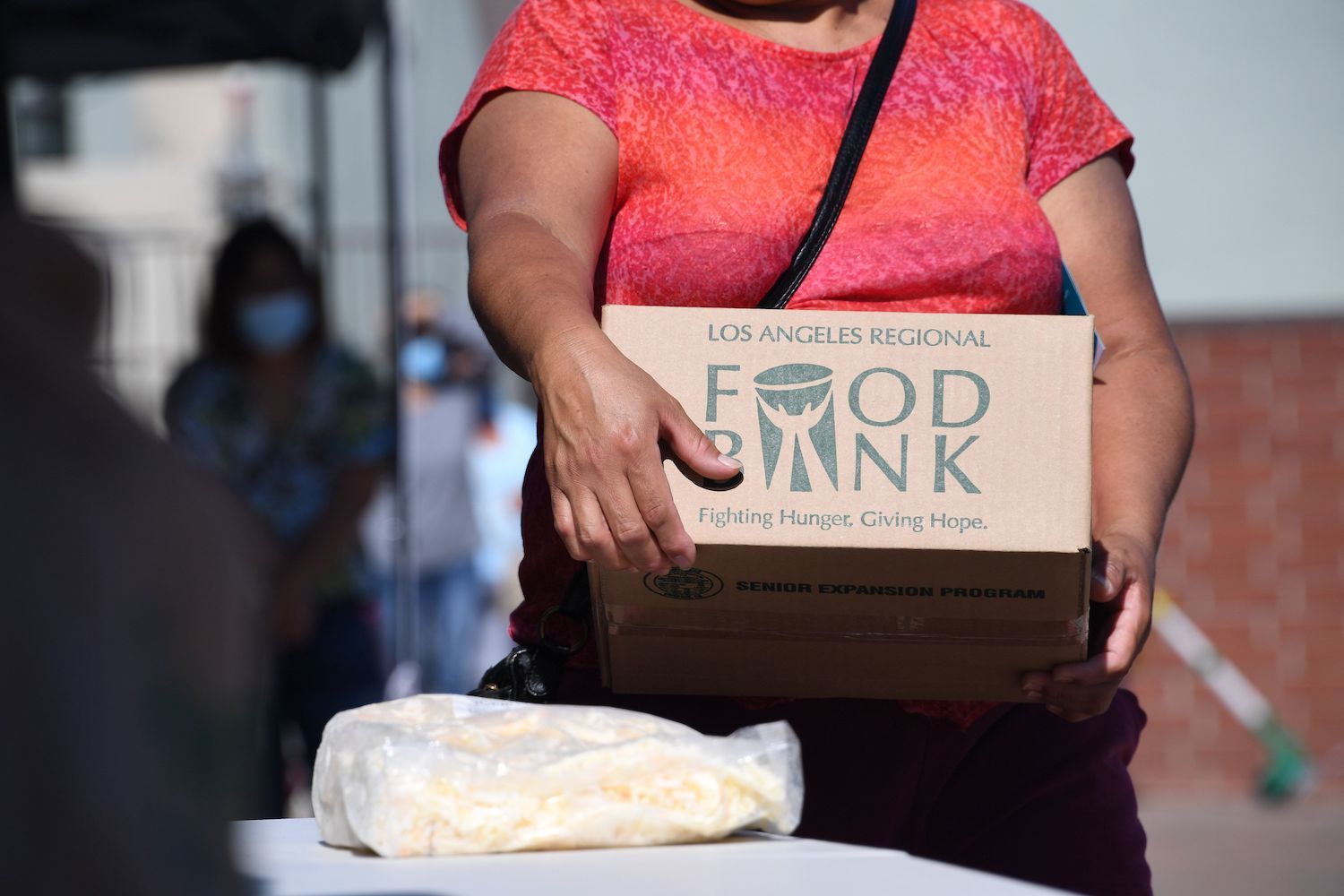
ROBYN BECK/AFP via Getty Images
According to a new USDA report, expansions in federal spending and charitable aid during the pandemic kept hunger levels from skyrocketing—although not all groups enjoyed the benefits equally.
Last year, as the pandemic ravaged the nation’s economy, tens of millions were thrown into sudden unemployment, stirring up fears of a resulting dramatic spike in hunger. On Wednesday, however, the Department of Agriculture (USDA) announced in a new report that despite the swell in need, food insecurity among American households in 2020 remained unchanged compared to the previous year.
The USDA found that 10.5 percent of households were food insecure last year, the same as in 2019, meaning at some point in 2020 they had difficulty providing enough food for all their household’s members due to “a lack of resources.” Households that had “very low food security,” or those that had to reduce their food intake due to a lack of resources, were “essentially unchanged,” even decreasing a bit from 4.1 percent to 3.9 percent.
“It’s really remarkable that when we look at food insecurity numbers it gives a sense of what can be when we adequately respond to a crisis of this level.”
Given the haunting images of cars stretching for miles outside food banks and estimates by Feeding America—the country’s largest hunger-relief organization—that one in seven people may have been food insecure in 2020, the USDA’s findings came as a surprise. Researchers cited the federal government’sexpanded nutritional and financial aid available, alongside increased food assistance by charitable organizations and mutual aid efforts, as essential in keeping hunger at bay during the pandemic.
“The circumstances of the crisis were absolutely unprecedented, so was the response,” said Emily Engelhard, managing director of research at Feeding America. “It’s really remarkable that when we look at food insecurity numbers it gives a sense of what can be when we adequately respond to a crisis of this level.”
In the 2020 fiscal year, federal spending on food and nutritional assistance reached a record-high $122.1 billion, providing expanded benefits and pandemic-related flexibility for safety net programs like the Supplemental Nutrition Assistance Program (SNAP) and the Special Supplemental Nutrition Program for Women, Infants, and Children (WIC). Last year also saw the establishment of the Pandemic Electronic Benefit Transfer (P-EBT) program, which helped cover meal costs for students during school closures and remote learning. Additional social protections like stimulus checks, enhanced unemployment benefits and eviction moratoriums offered further financial cushioning.
Racial disparities in food insecurity, which predated the pandemic, worsened last year.
Charitable organizations ramped up their food assistance efforts as well, with at least 60 million Americans—more than 1.5 times the 38.3 million people the USDA classified as food insecure—relying on food banks, food pantries, or other charitable food assistance programs, a 50 percent increase from 2019, according to Feeding America. And hundreds of grassroots mutual aid groups have popped up since the start of the pandemic, securing and disbursing groceries and prepared meals to their communities.
Recent history shows how a financial crisis can result in immense food insecurity. In 2008 amid the Great Recession, food insecurity in households skyrocketed to 14.6 percent, up from 11.1 percent in 2007, reaching a peak at 14.9 percent in 2011 and not dipping below pre-recession levels until 2019.
The stagnation in households facing food insecurity, however, masks how even with these new or supplemented benefits, difficulties accessing food were exacerbated for particular populations.
Racial disparities in food insecurity, which predated the pandemic, worsened last year: 21.7 percent of Black and 17.2 percent of Hispanic households experienced food insecurity in 2020, an increase from 19.1 and 15.6 percent, respectively, from 2019. At the same time, white households facing food insecurity declined, from 7.9 percent to 7.1 percent. According to Julia Wolfson, assistant professor of public health at Johns Hopkins University, multiple factors could help explain these gaps. Black and Latino Americans were more likely to hold jobs in sectors like hotels or restaurants, which suffered the highest layoffs during the pandemic, and more likely to contract Covid-19—many working in frontline jobs that couldn’t be done remotely—which could cause further economic hardship. “I think it really underscores the need not only to have those [food assistance] programs in place, but to make sure those programs reach those people who need them the most,” Wolfson said.
“If loss of in-person schooling and child care keeps people out of the labor market so they aren’t earning money, then it causes increased food insecurity that falls disproportionately on families with children.”
Food insecurity was also worse in households with children. In 7.6 percent of households that included kids, both children and adults were food insecure, up from 6.5 percent in 2019. Children in 0.8 percent of those households had to go hungry, skip meals, or not eat for an entire day, compared to 0.6 percent in 2019. Christopher Barrett, an agricultural and development economist at Cornell University, noted that even with expanded SNAP benefits as well as free school meals, lost income for parents who stayed home to watch their kids amid school closures could have offset those benefits.
“If loss of in-person schooling and child care keeps people out of the labor market so they aren’t earning money, then it causes increased food insecurity that falls disproportionately on families with children,” Barrett wrote in an email.
The USDA’s report did not capture the effects of a number of recent pandemic-era benefits wrapped up in the Biden administration’s American Rescue Plan, which could further assist in combating food insecurity, including another round of stimulus checks and the expanded child tax credit for 2021. Earlier this month, the USDA announced a permanent increase beginning October 1 to monthly SNAP benefits, which is expected to affect roughly 42.8 million people and result in an average increase of $36.24 per month for individual recipients.
“Unless programs introduced during the pandemic like summer P-EBT and universal free school meals are made permanent, their eventual elimination could result in a backsliding of households facing food insecurity.”
But some worry that further decreases in food insecurity could stall without more help. The Delta variant has slowed down the nation’s economic recovery, and this summer’s series of natural disasters has laid “a crisis on top of a crisis,” Engelhard said.
And then there’s the question of how long these pandemic-era programs will survive. A temporary 15 percent increase in SNAP benefits is set to expire on September 30, and the federal pandemic unemployment program lapsed over Labor Day. Food pantries and other charity programs that have been stretched thin over the past 18 months continue to see a heightened need for assistance, which will be difficult to meet without additional support from the federal government.
Geri Henchy, director of nutrition policy at Food Research and Action Center, a nonprofit focused on eliminating hunger, warned of a benefits “cliff.” Unless programs introduced during the pandemic like summer P-EBT and universal free school meals are made permanent, she said, their eventual elimination could result in a backsliding of households facing food insecurity.
“Those benefits will be taken away and unemployment has just ended,” Henchy said. “We will definitely see more people being food insecure.”

